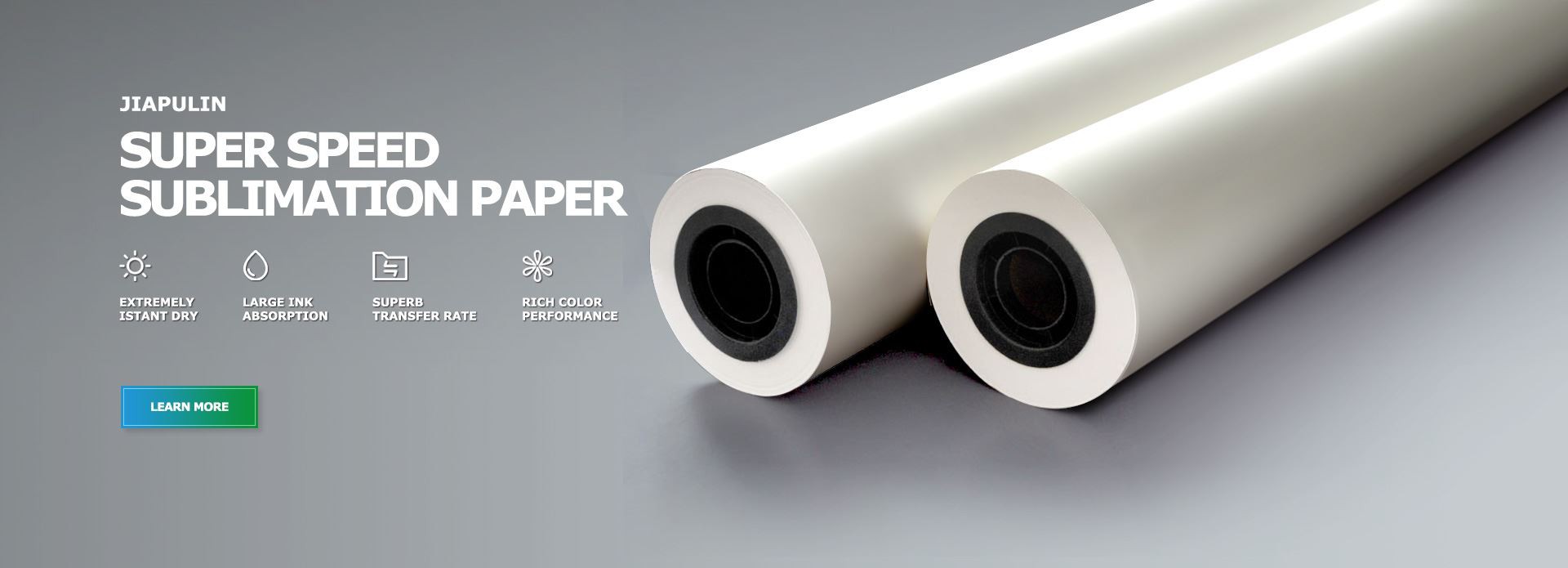Quick-drying thermal sublimation transfer medium
Jun 19, 2024
A new type of quick-drying thermal sublimation transfer medium includes a substrate and a coating applied on the surface of the substrate. The coating is composed of a quick-drying main agent, a film-forming auxiliary agent and an auxiliary agent; the quick-drying main agent is a non-water-soluble powder with an extendable hydrophilic chain segment on the surface, the film-forming auxiliary agent is a water-soluble polymer, and the auxiliary agent is a defoaming agent. The present invention adopts the above technical scheme to enable the thermal sublimation transfer medium to have a very high thermal sublimation transfer rate and adapt to high-speed transfer and low-cost production.
Thermal sublimation transfer is a waterless printing and dyeing process with a high environmental protection effect. It has important value for the energy-saving and emission reduction transformation project of high-energy consumption industries currently advocated by the country, and has become a research hotspot. The principle of thermal sublimation transfer is that at high temperature (usually above 220°C), the disperse dye on the thermal sublimation transfer medium sublimates to the chemical fiber fabric and is directly fixed by the fabric fiber, and the printed and dyed chemical fiber fabric can be washed without water. It can be considered that the thermal sublimation transfer process, especially the digital thermal sublimation transfer process, is a highly environmentally friendly, practical and reliable process, which is expected to replace the traditional printing and dyeing process.
The thermal sublimation transfer medium is the technical core of the entire process, especially the coating formulation technology. First of all, the coating formulation requires that it can well accept the ink to form a delicate pattern, and release the disperse dye when heated, so that it can fully sublimate and form a high thermal sublimation transfer rate. However, due to the limitations of current technology, the existing products need to wait for a long time after receiving the ink so that the ink can be fully absorbed to form a dry surface before transfer. This limits the processing efficiency of the thermal sublimation process to a large extent. If an external heating device is used to heat and dry the thermal sublimation transfer medium that receives the ink, it will significantly affect the thermal sublimation transfer rate, thereby causing color difference in the product. Especially for the digital thermal sublimation transfer process, the low processing efficiency has seriously restricted the promotion of the process. Therefore, a thermal sublimation thermal sublimation transfer medium with both high transfer rate and high-speed drying ability is needed to promote the further development of the thermal sublimation process. Patent CN1315906A discloses a transfer paper suitable for inkjet printing, the coating of which has a porosity of up to 100 ml/min. The isolation layer or barrier layer is mainly composed of polyvinyl alcohol, carboxymethyl cellulose, alginate, gelatin or a mixture thereof. It may contain up to 15% kaolin or talcum powder filler. The coating with low porosity will prolong the time for the water in the ink to absorb, while blocking the ink from penetrating into the paper. Simply increasing the filler content to increase the porosity can increase the drying speed, but will reduce the thermal sublimation transfer rate. If an adsorbent is used, in the case of a larger porosity, the dye in the ink is adsorbed and water passes through the coating, which can achieve a high-speed drying effect, but the adsorption will hinder the sublimation of the dye and also reduce the transfer rate. A more feasible method is to use surface modification to graft a hydrophilic polymer on the filler surface. In this way, the filler can produce sufficient porosity to obtain quick-drying performance, and the filler itself can have certain film-forming and suspension properties, thereby obtaining a higher thermal sublimation transfer rate.
https://www.jiapulin-print.com/







